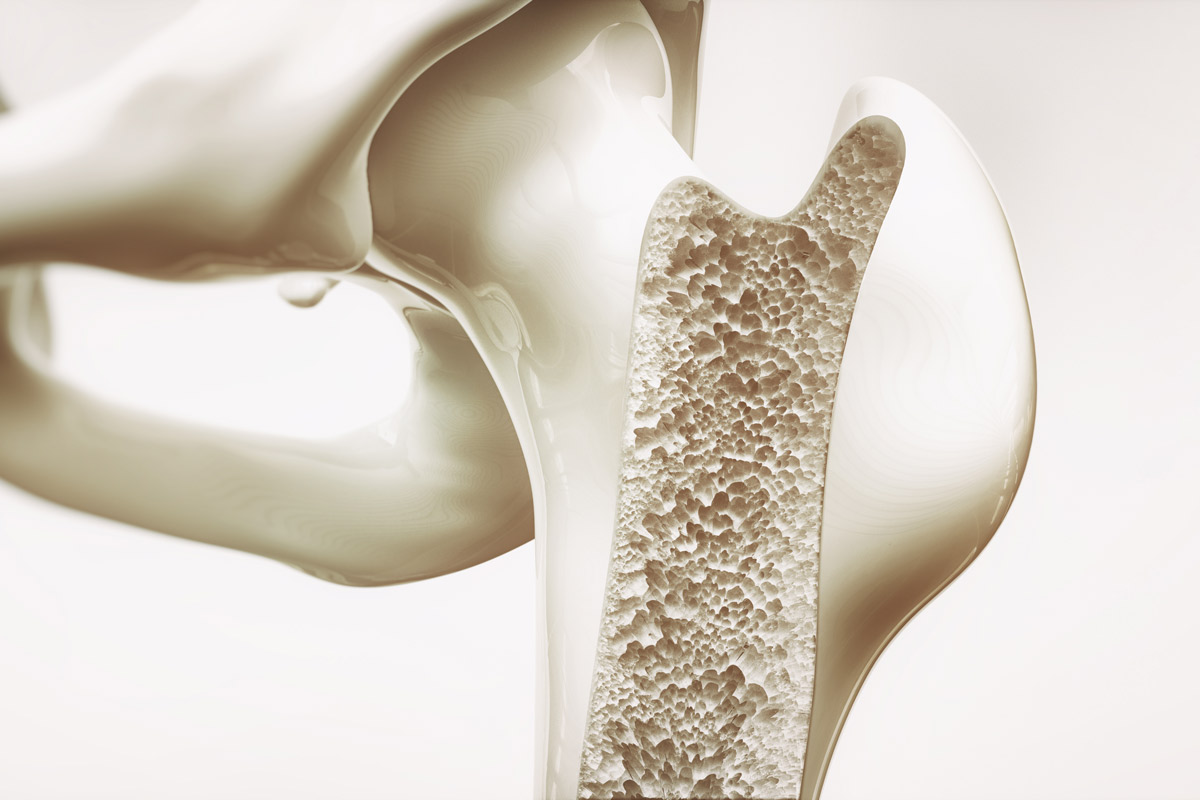
Understanding Bone Loss & How to Prevent Osteoporosis
In the United States, osteoporosis affects 80 percent of women and 60 percent of men ages 65 years and older.
With growing average life expectancy, osteoporosis screening and treatment is becoming increasingly important.
Osteoporosis is characterized by low bone mass, micro deterioration of bones, decreased bone strength and increased risk of fracture.
When bones are healthy, they can withstand a surprising amount of wear and tear. However, as we age, we begin to lose bone density, which puts us at an increased risk for fractures.
Peak bone density occurs between the ages of 25 and 30 years old. Beginning at around age 40, adults can expect to experience bone loss due to an imbalance in “bone remodeling.”
Bone remodeling is the process by which large bone cells called osteoclasts absorb old bone tissue, and other bone cells called osteoblasts create new bone in its place.
Bone remodeling begins in childhood and continues through your lifetime in order to maintain nutrient supply, repair fatigue damage and reverse the consequences of aging.
In fact, in your first year of life, almost 100 percent of your skeleton is replaced by bone remodeling!

While bone remodeling is a natural part of life, women undergo increased bone remodeling during menopause.
Remodeling is stimulated by mechanical strain on the bone matrix. This is why bone loss is seen readily in the weightlessness of space, as without gravity, astronauts are not exerting the mechanical stress required to maintain bone strength and remodeling.
If you are not putting mechanical stress on your bones in the form of regular exercise, especially resistance exercises, your bone cells die and the remodeling process goes into an imbalance, which can result in metabolic bone diseases, including osteoporosis.
In order to aid bone remodeling as you age, it is very important to give the body the minerals it needs and the forces needed to stimulate the specialized cells to remodel/strengthen the bone.
The best way to do this is through preventive measures, including the following:
- Engage in resistance exercises (e.g., wall push-ups or chair squats) and weight-training to improve bone density and prevent osteoporosis.
- Optimize calcium and vitamin D intake through diet or supplements:
- Vitamin D3 – 800 units/day (minimum); typically 1,000-2,000 units are better. Test vitamin D3 level to optimize.
- Calcium – 1,200mg total per day (600mg twice per day). Take with food.
- Assess medications that may interfere with calcium absorption.
- Avoid smoking and excessive alcohol intake.
- Reduce risk of falls or other injury.
Bisphosphonates are the pharmaceutical treatment of choice in most osteoporosis cases, as bisphosphonates suppress the resorptive phase of bone remodeling by inhibiting osteoclasts.
Other treatments, such as hormone therapy, selective estrogen receptor modulators (SERMs) or recombinant human PTH, also may be recommended; however, work with your primary care physician to find the best management plan for you.
Published on: November 15, 2018





